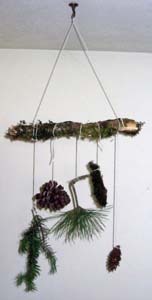Dolphins are Ocean Athletes
Hello,
Our Kids Science Newsletter is published each month during the school year. This Kids Science Newsletter includes a question of the month, current science events, science trivia and a simple science activity that is fun for everyone.
Question of the Month
What is the surface of Venus like?
(answer follows the simple science experiment)
Science Current Events
- Dolphins are Ocean Athletes
- A scientist in 1939 studying dolphins said they used hydrodynamic tricks instead of being strong enough to swim as fast as they do through the water. Recent research to study the dolphins was adapted from research on Olympic swimmers to see how muscular dolphins really are. The researchers studying patterns of bubbles found they generate 1.4 times more power than amateur cyclist can sustain for an hour. The dolphins can increase their power by 10 times when they accelerate rapidly disproving the theory proposed by the scientist in 1939.
- Arctic Blasts Insects
- The Arctic vortex that swirled down into the lower 48 states this winter saved many trees from insects that were living under the tree's bark. In Minnesota the cold air probably killed many of the emerald ash borer that has killed over 10 million trees. It is believed that 80% of the insects were killed when the temperatures were between minus 22 and minus
26 degrees Fahrenheit. Large numbers of Gypsy Moths that attack over 300 species of trees, shrubs and other plants were also believed to have perished in the cold weather.
- Mild Winter Weather in Norway
- Bears have been coming of hibernation early and plants are blooming in Northern Europe. Nordic residents have experienced one of the mildest winters in over a century. Daffodils were blooming in Norway in mid-December.
- Drones Search for Poachers
- Drones are soon going to be used to catch poachers in Africa. They want to catch poachers in the act of slaughtering elephants for their ivory. Over 11,000 forest elephants were killed over the past decade in Gabon's Minkebe National Park. The poachers hacked off the tusks and sold them in illegally to ivory traders.
Science Trivia
- The lion and leopard are larger than cheetahs. They are built for speed and can run more than 70 miles per hour for short distances when chasing prey. Cheetahs can also change direction in midair when chasing prey. Cheetahs live primarily in open savannahs.
- Viruses are the smallest type of organism known to man. Viruses cannot live on their own, but instead they invade the cells of living things. They force these cells to make more of the virus organisms. This is how the organisms reproduce. Viruses that cause many diseases in people including colds and the flu.
- Insects seem to be immune to many diseases. Their immune response is very similar to mammals. Scientists in recent years have been studying the common fruit fly to learn the fundamentals of immunity in both insects and mammals.
- Plankton is a term for all the microscopic plants and animals living near the surface of the water. The plants are phytoplankton and the animals are zooplankton.
Simple Science Activity
Nature Mobile
Introduction
Take a walk out into the woods for this fun activity and gather a lot of different materials in a sack. If you don't live near some woods go to some other area where you can gather a variety of natural materials for your mobile.

Materials
- Branch of a tree
- Variety of cones
- Small branches with leaves on them
- Moss
- Leaves with a stem
- String
- Scissors
Directions
- Go on a nature walk to gather natural materials for this project.
- Sort the materials into different groups.
- Plan your mobile so you have a variety of shapes and sizes of material that you have gathered.
- Tie different lengths of string to your branch.
- Tie a longer string to the two ends of the branch to hang your mobile from the ceiling.
- Tie different natural materials you have on the strings.
- Hold up your mobile to see if you need to make any changes before hanging it up.
- When completed hang it from a hook in the ceiling.
Science behind the experiment
No matter where you live there will be natural materials that you can collect for you mobile. Look around where you live and
think about what grows naturally in your area. Try to create a mobile with materials from a forest, desert or the seashore.
Answer to the question of the month
What is the surface of Venus like?
Venus is a rocky planet that contains large craters and high mountains. Scientists have a hard time studying the surface because of the thick clouds that surround the planet. The clouds both reflect and absorb the Sun's heat causing the surface to be the hottest planet in our Solar System. The atmosphere on Venus is over 800 degrees Fahrenheit and is one of the brightest in our Solar System.
Links to our back issues of Kids Science Newsletter
Our Other Websites
Ring of Fire Science
Science Kits for Kids
Kids Earth Science
Please share this newsletter with a friend by forwarding it to them. If you know of a group who might enjoy the newsletter please let them know about it also.
Comments? Ideas? Feedback? I'd love to hear from you. Just reply to this Just For Kids Science Newsletter and tell me what you think!
Sincerely yours,
Myrna Martin

